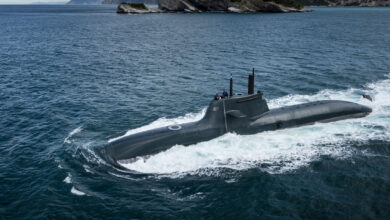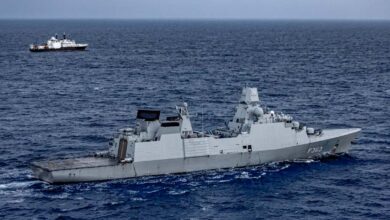Russia to Deploy Submarine Armed With Nuclear Drone in Pacific
The soon-to-be-commissioned vessel can carry out missions anywhere, Russian state media wrote.
The Belgorod nuclear submarine will serve in the Russian Navy’s Pacific Fleet after passing a series of tests, Russian state news agency TASS has reported.
The soon-to-be-commissioned vessel, designed to carry Poseidon underwater nuclear drones, has the capability to carry out missions in any part of the world, according to the outlet.
TASS had earlier reported that trials on the submarine would take place beginning in May 2021. However, this has not been officially confirmed.
The Sevmash shipyard began constructing the Belgorod in December 2012, and it was scheduled to be commissioned in September 2020 after passing sea trials in June, according to TASS. The delay was reportedly due to the pandemic.
World’s Longest Submarine
At 184 meters (603 feet), it will be the world’s longest submarine once it is commissioned, nine meters longer than the current longest Typhoon-class submarine.
Its displacement is ten thousand tons while it can travel up to 30-32 knots (55-59 kilometers per hour), RIA Novosti reported citing open-source data.
The submarine’s maximum immersion depth is 500 meters (1,640 feet) while it can run autonomously for up to 120 days and has a crew capacity of 100 sailors, the Russian news agency added.
Can Carry Six ‘Doomsday’ Drones
The submarine is purpose-built to carry six autonomous Poseidon torpedos.
Dubbed the “doomsday drone,” the Poseidon has a range of 1,000 kilometers (620 miles) and can carry a nuclear warhead with a yield of up to 100 megatons to most parts of the world while remaining immersed 1,000 meters (3,300 feet) beneath the surface.
New Drone-Carrying Submarines Planned
Russia plans to deploy 30 Poseidon drones in a new line of submarines, National Interest reported.
The first of four Khabarovsk class submarines is expected to be commissioned in 2023 with the second — Ulyanovsk — to follow by 2027, the news outlet added.
Poseidon was mentioned by Russian President Vladimir Putin in his 2018 state address as one of the country’s six “super weapons” developed in response to the American missile defense program.
Putin detailed in his address that the underwater drone would be difficult to detect and intercept because of its speed and size and would cause massive damage to coastal targets after the underwater launch.












